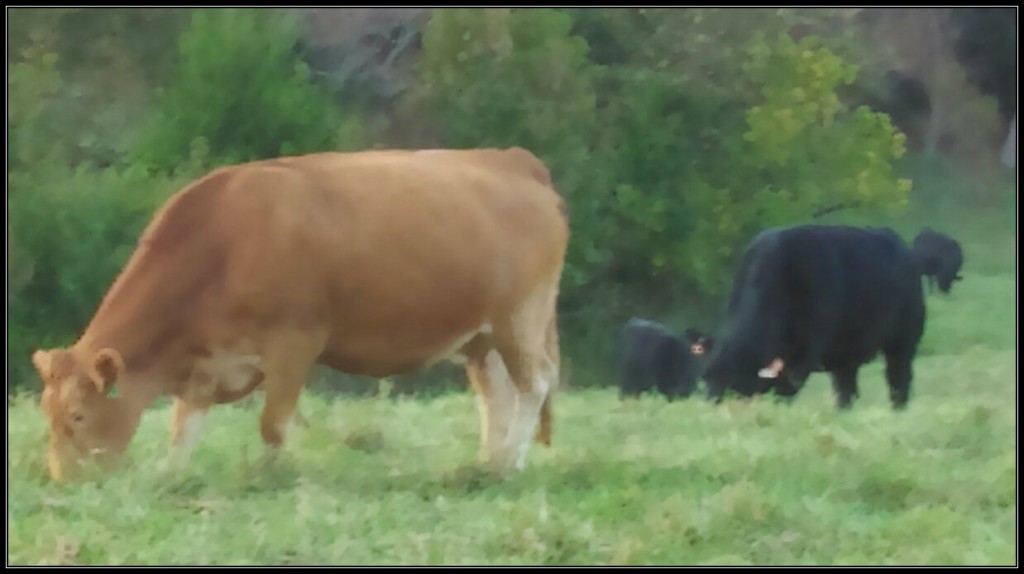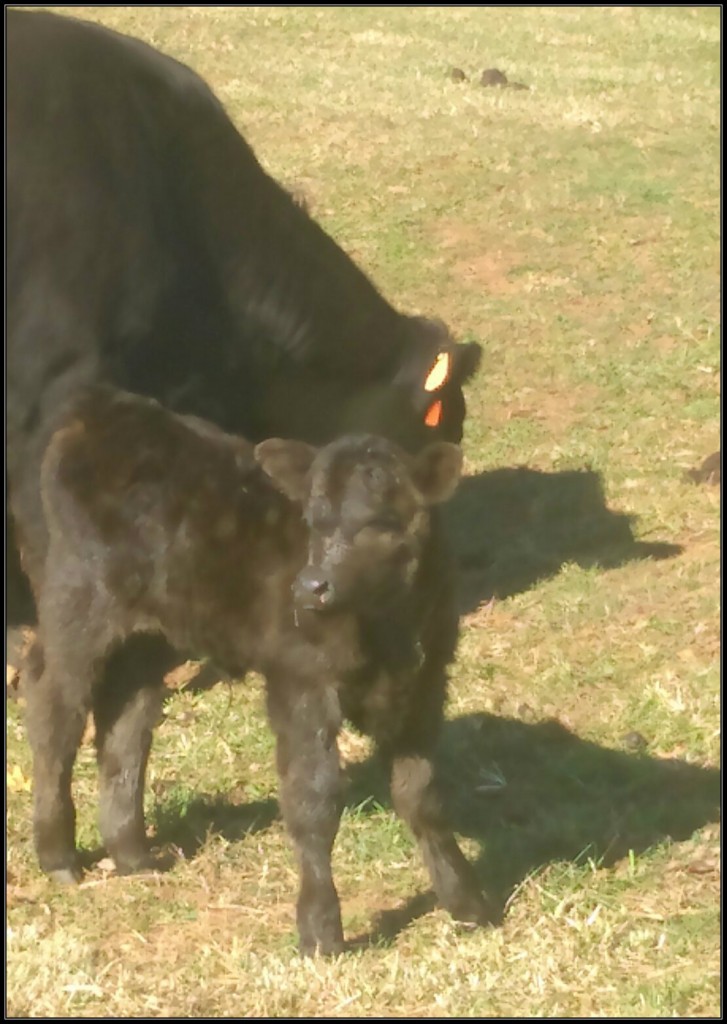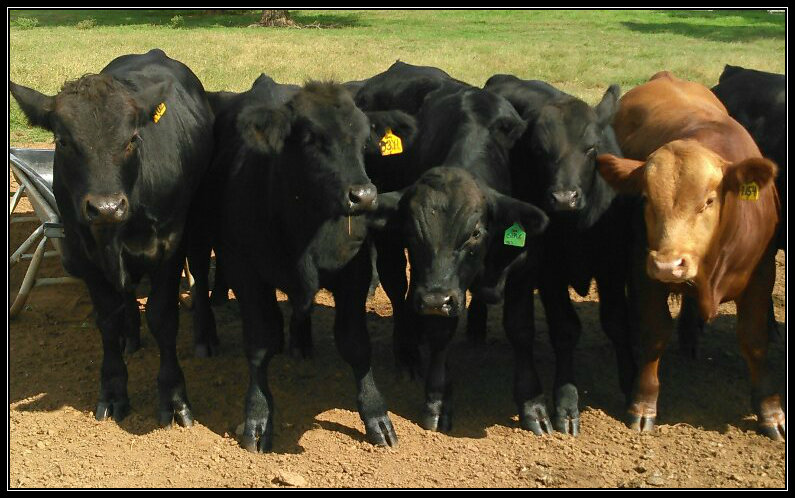In 1986, Walter and Lee Teeter began a quest to add a complementary breed to Walter’s small group of Polled Hereford cattle. Visiting other breeders and comparing the MARC research data put the Gelbvieh breed in the forefront of the third-generation breeder’s search. Traveling to Louisiana, the first purchase of Gelbvieh genetics was added with the purchase of a single red, horned bred cow. Walter’s dad had purchased a Gelbvieh bull at Knoll Crest and that bull bred the handful of Polled Hereford females. When those resulting calves were weaned, Walter and Lee were sold on Gelbvieh. Trips were made to Virginia, Iowa and Montana where a few weaned heifers were added at each stop to start the newly weds small farm. Impressed by the maternal traits and added weaning weight of the Gelbvieh calves, Walter made the decision to go all Gelbvieh and sale the Herefords.
In the fall of 1989, it was evident that the Gelbvieh breed offered the growth, fertility and disposition that the young couple was after. At the dinner table one evening, membership form in hand, the question of “What will our farm name be” came up. After contemplating several options using names and initials where nothing seemed to fit, Lee posed the question, “What do we have that we could use?” Walter’s reply was, “A few Gelbvieh cows and a bunch of green hills.” With that quip, the farm name was filled in and Green Hills Gelbvieh was officially a Gelbvieh breeder. The breeding of these early females would be influenced by their fathers, Perry Teeter and Robert Dyson, as the young Teeters ran their cows in conjunction with their family’s cattle. While the goal of producing heavy weaning, structurally sound, fertile females was never out of sight, there was a desire to introduce the convenience of polled cattle and meet customer demand for black bulls. Two bulls were purchased by their fathers that would help move the cow herds in those directions. JBOB Black Image 11Y and POW Jetstream 36B were purchased and would provide a lasting impact on not only Green Hills cattle but would become nationally recognized AI sires. Black Image being homozygous black would turn them black and Jetstream being homozygous polled would make them polled. These early cattle not only excelled in the pasture but began the Teeter’s presence in the showring.
As the cattle herd grew, so did Walter and Lee’s family. Sons Garrett, Justin and Austin joined the family and as they grew each added their input and dimension to the farm. As the grandparents played smaller roles in production, the boys grew and took up the love and challenge of meeting the changing demands of the beef industry. At the urging of their sons, Balancer cattle and purebred Angus were added in 2005. These changes were to improve carcass and leg structure and meet the industry’s call for such change. In their breeding and purchasing decisions, the Teeters have been fortunate to find some individual cattle that have gained prominence in their own right. Some of the notable cow lines at Green Hills have been JBOB 3103K dam of GHGF Contessa 310T and GHGF Crown Jewel 103P, HHF S31 dam of GHGF Ashley 31A, TFLK Whitney 251W ET, JBOB 5277P dam of GHGF Deanna 77D, PLA Zelda 20Z dam of GHGF Zelda 20F, GHGF Zelda 20F1, and GHGF Zelda 20G, GHGF Carefree 2Z1 ET dam of GHGF Trump Train C521, GHGF Whit 25D dam of GHGF Man O War F825. Of the sires to walk the green hills, one of the most exciting has been FMGF Blue’s Impact 001X and his son GHGF Cow Town D536.
Aside from the excitement that the cattle have generated, the Teeters have found ways to enjoy and hopefully aid the growth of the Gelbvieh association through assuming leadership and committee roles. Walter served 2 terms on the AGA Board of Directors and served on the AGA Foundation board. All three sons were active in the AGJA with Garrett serving on the AGJA Board of Directors. The Teeters are active in supporting the junior association, the Breeder’s Choice Bull Futurity and the Balancer Bull Futurity and showing locally, regionally and nationally. They hope to continue promoting and supporting Gelbvieh for generations to come.
Employing Walter’s philosophy: To be successful you need to work together, determine what you do well and do it better than the competition has been a driving factor for his operation.
Cattlemen attending the Boys from the South Bull Sale, which Green Hills Gelbvieh partners with Butler Creek Farms to sponsor, see this philosophy at work each late fall. The Green Hills Gelbvieh bulls have that edge and have gained a reputation for working in the front, as well as the back, pasture.
Individuals standing at ringside or participating in the shows where Green Hills Gelbvieh bulls and female exhibit also know firsthand that this philosophy works—and that Green Hills Gelbvieh cattle that excel in the front pasture can also excel in the showring.




